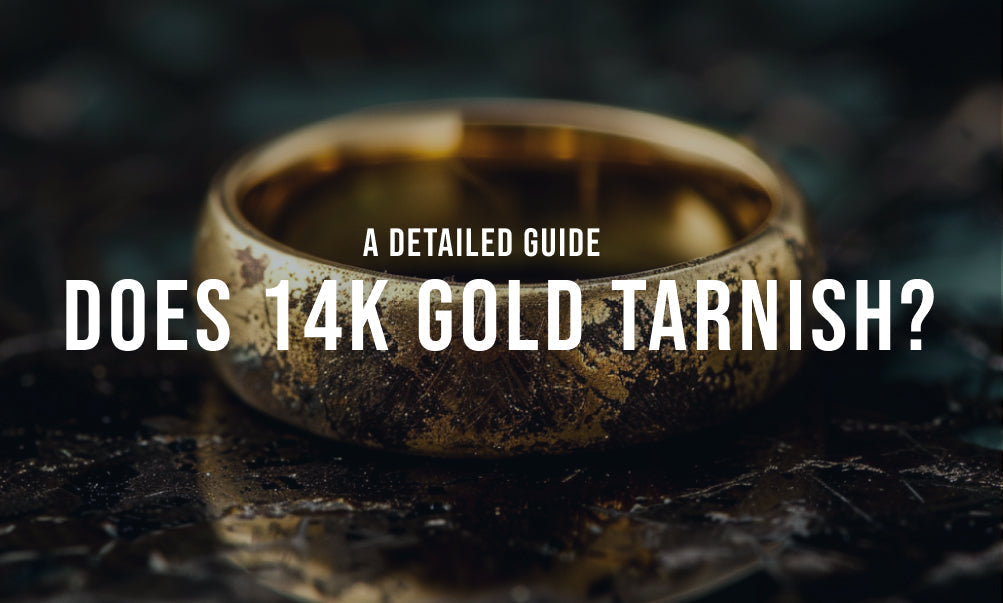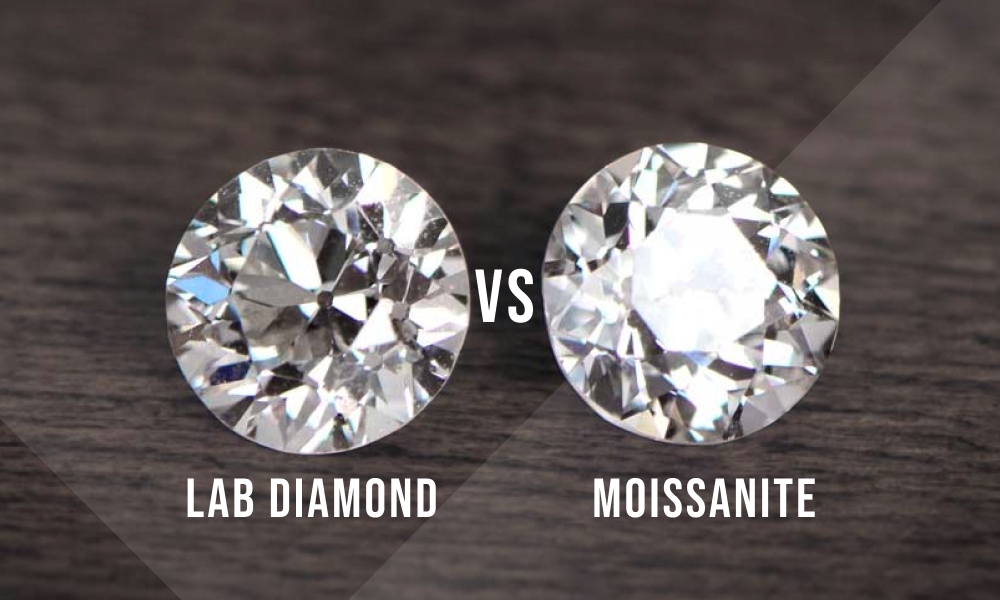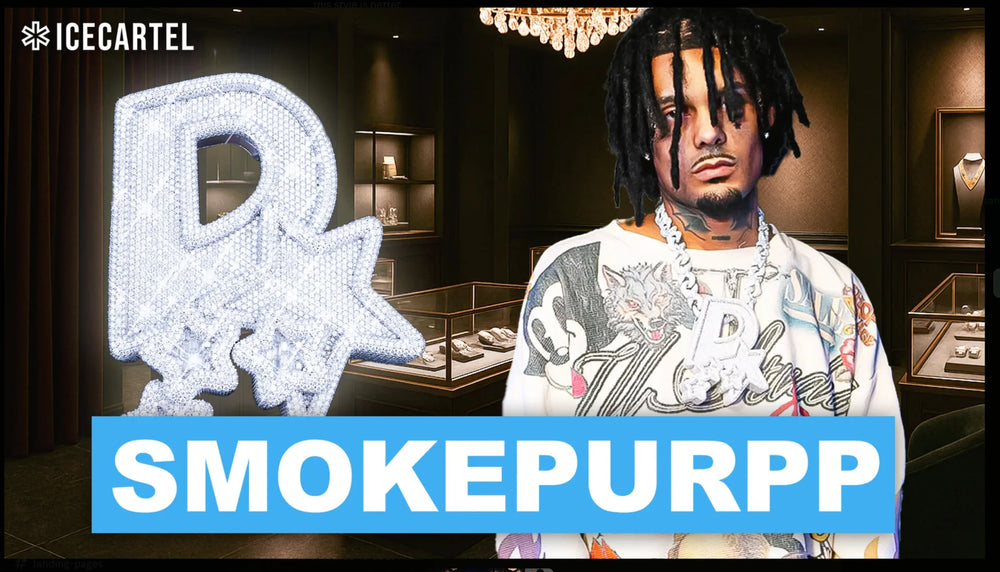Gold jewelry has long been associated with elegance, sophistication, and wealth. Out of various gold karat weights, 14K gold is a popular choice as it offers a perfect blend between quality and price.
While 14K gold is renowned for its durability, there’s one particular question that we get asked a lot: does 14K gold tarnish?
Although gold itself doesn’t tarnish, its alloys do develop some discoloration over time. As 14K gold is only 58.33% pure gold, it may tarnish when exposed to chemicals or various environmental conditions.
So, what causes 14K gold to tarnish, and how to prevent that stubborn discoloration in the first place?
In this detailed guide, we’ll walk you through the factors that lead to 14K gold tarnishing and share some helpful tips to retain the nice yellow color and lustrous finish of your precious jewelry.
Does 14K Gold Tarnish?
The short answer is, Yes, 14K gold can tarnish. In fact, it’s not the pure gold content that changes color but the other metals in the alloy instead. Here’s why.
In its pure form, gold doesn’t tarnish or corrode, thanks to the low reactivity of gold as an element. However, pure gold is hardly ever used in jewelry due to its malleability. Rather, jewelers use gold alloys to make various pieces, with 14K gold being one of the most desirable options.
14K gold is an alloy consisting of 58.3% pure gold and 41.7% other metals, such as silver, copper, zinc, nickel, palladium, and cobalt.
The composition of a 14K gold alloy explains why 14K gold jewelry sometimes undergoes specific changes in appearance over time.
For example, silver tarnishes and the color changes to red-brown or blue as it reacts with oxygen and sulfur-containing gases in the air. Similarly, copper can develop a black, brown, or green tarnish from exposure to certain chemicals and moisture.
All things considered, the tarnishing of 14K gold jewelry is caused by the presence of silver and copper in the alloy. The higher the weight percentage of silver and copper in a gold alloy, the higher the chances of the jewelry to tarnish.
If you compare 10K vs 14K gold , you’ll notice that 10K gold is more prone to tarnishing due to its lower pure gold content.
Also Read: Where to Sell Your Diamond Necklace
Why Does 14k Gold Tarnish?

But what makes 14K gold tarnish?
There are several factors that can cause your gold jewelry to deteriorate over time. While some of them are inevitable, others can be avoided with proper care and maintenance.
Here are some common reasons why your 14K gold jewelry might have developed discoloration.
Humidity and Moisture
When 14K gold is exposed to humidity, the moisture in the air reacts with silver and copper in the alloy, causing an accelerated tarnishing process.
However, it’s not really about the moisture itself but the sulfur content in it. Silver reacts with sulfur-containing gases, which increases the rate of tarnishing.
Exposure to Chemicals
While 14K gold has high purity and is quite durable, it can still develop a slight tarnish as it comes in contact with various chemicals.
It could be harsh cleaning agents like bleach and chlorine or mild skincare products like shower gels and body lotions.
Besides, spraying your favorite perfume while wearing 14K gold jewelry can also increase the rate of tarnishing.
Wearing your gold jewelry while cooking can also tarnish the alloy, as acidic food products and 14K gold don’t get along quite well.
Perspiration
While sweat is mostly water and salt, it also contains a mixture of other chemicals that can cause 14K gold tarnishing.
The slightly acidic nature of sweat and the content of ammonia and urea can cause the tarnishing of silver and copper in 14K gold.
While gold is generally sweat-resistant, the metals in a 14K gold alloy can develop some discoloration when exposed to sweat for prolonged periods of time.
Air Pollution
According to the study of the silver tarnishing mechanism , molecular dynamics simulations revealed that silver reacts with sulfur-containing gases such as hydrogen sulfide (H 2 S) in the air, leading to the formation of silver sulfide tarnish (Ag 2 S).
Therefore, when 14K gold jewelry is exposed to air pollutants, especially sulfur-containing gases, the rate of tarnishing increases.
Lack of Maintenance
Keeping your gold jewelry well-maintained is key to preserving that luster and shine. If you fail to clean your 14K gold jewelry regularly, the alloy may get slightly darker in color and deteriorate over time.
While tarnishing will be inevitable at some point, you can minimize the impact by taking good care of your precious jewelry.
Low Quality Plating
When compared to solid gold jewelry , gold-plated pieces are more prone to tarnishing and discoloration. Therefore, the thickness and quality of the plating are particularly important.
In jewelry with relatively thin and uneven 14K gold plating, tarnishing can be expected within 3-6 months of active wearing.
Read more about why gold-plated jewelry tarnishes over time .
What Kind of 14K Gold is More Prone to Tarnishing?

14K gold doesn’t tarnish or lose luster easily. In fact, 14K gold jewelry with a smooth and uniform finish is less prone to tarnishing.
Contrarily, 14K gold jewelry with cuts and grooves is more likely to tarnish. This is due to the increased exposure to air, moisture, and chemicals, which in turn accelerates the tarnishing process.
How to Prevent 14K Gold from Getting Tarnished

Generally speaking, 14K gold jewelry is quite durable and not easy to scratch or tarnish. You can even maintain the original color and shine if you take proper care of your jewelry.
Here are a few tips to prevent your 14K gold from tarnishing.
Proper Storage
First things first, know how to store your jewelry . Ideally, you should choose a dry and dark place to minimize exposure to light and moisture.
Besides, it’s recommended to use compartmented jewelry boxes to prevent scratching and retain a smooth and polished surface.
The same applies to packing your jewelry when going on that well-earned vacation. You should keep the pieces organized by placing them in individual ziplock bags.
Regular Maintenance
The most effective means of preventing 14K gold from tarnishing is setting a regular cleaning and maintenance routine.
You don’t need fancy tools or harsh chemicals to clean your 14K gold jewelry . Rather, you can use a few household products to keep them shiny. These include baking soda, white vinegar, dish soap, and lemon juice.
Re-coating from Time to Time
Gold tarnishing is quite common in gold-plated jewelry. While you cannot really prevent discoloration as the gold plating fades away, occasional re-coating will preserve the luxurious appearance of your jewelry.
Conclusion
14K gold has a nice yellow color and exceptional durability, making it a popular choice for all types of gold chains , bracelets, rings, earrings, and more.
But does 14K gold tarnish? Or, does it maintain its lustrous finish and luxurious appearance?
As 14K gold is an alloy of pure gold and other metals like silver and copper, slight discoloration and tarnishing can be expected. While gold doesn’t tarnish, silver and copper do corrode over time.
14K gold tarnishing can be caused by exposure to moisture, chemicals, and sweat. Besides, improper storage and lack of maintenance can also deteriorate 14K gold jewelry.
To prevent 14K gold from tarnishing, store the jewelry in a dry place and consider regular cleaning using mild household products, including dish soap, white vinegar, and baking soda.
Frequently Asked Questions
How often should I get my 14K gold jewelry replated?
On average, 14K gold plating lasts anywhere between 3 months and 2 years, depending on how you use and maintain your jewelry. Once you notice that the gold plating is starting to wear down, you can consider getting it replated.
Can 14K gold turn yellow over time?
Subtle color changes in 14K gold are expected as silver and copper in the alloy can corrode over time. 14K gold won’t turn yellow, but silver or copper tarnishing can make the alloy look slightly darker.



































































